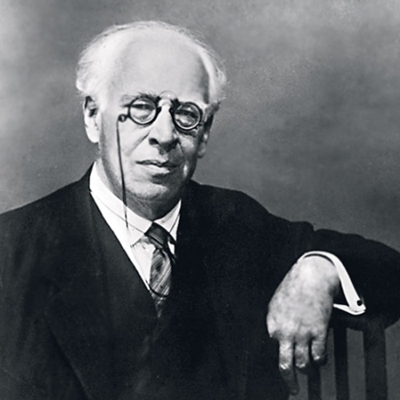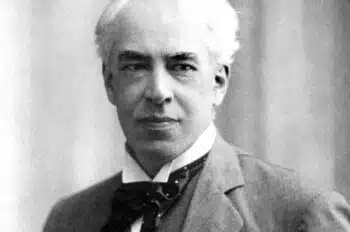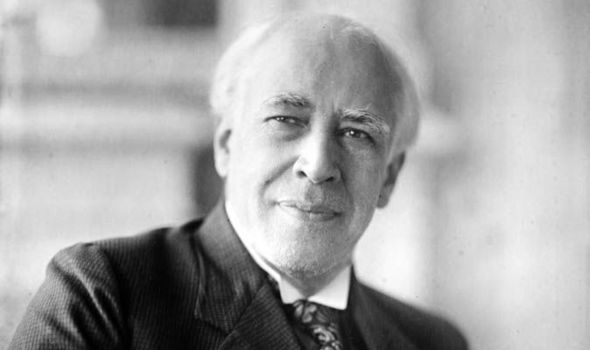15 Brilliant Quotes by Konstantin Stanislavski
Let’s explore 15 dazzling quotes about the craft of acting by Konstantin Stanislavski
(By Carmichael Phillips)

(Konstantin Stanislavski)
RELATED TOPICS:
Konstantin Stanislavski: “There are no small parts, only small actors.”
What is the Stanislavski System?
7 Basic Facts About Konstantin Stanislavski
It’s impossible to quantify the number of actors who have been directly or indirectly influenced by the teachings of Konstantin Sergeyevich Stanislavski. Indeed, it’s much easier to count the number of actors who haven’t been influenced by him.
His ideas directly informed the teachings of other influential thinkers, including Stella Adler, Lee Strasberg, Uta Hagen and Sanford Meisner. Meanwhile, his Moscow Art Theatre (MAT) toured the globe, impacting countless others.
Stanislavski’s contributions to the craft extend far beyond the books he left behind, which include An Actor Prepares and Building a Character. He also left behind a plethora of brilliant quotes about the craft.
Let’s explore 15 dazzling quotes on the craft by Konstantin Stanislavski.
On wisdom…
“The greatest wisdom is to realize one’s lack of it.”
On imagination…
“The actor must use his imagination to be able to answer all questions (when, where, why, how). Make the make-believer existence more definite.”
On inner motives…

“All action in theatre must have inner justification, be logical, coherent, and real.”
On outside distractions…
“Remember this practical piece of advice: Never come into the theatre with mud on your feet. Leave your dust and dirt outside. Check your little worries, squabbles, petty difficulties with your outside clothing – all the things that ruin your life and draw your attention away from your art – at the door.”
On inspiration…
“When an actor is completely absorbed by some profoundly moving objective so that he throws his whole being passionately into its execution, he reaches a state we call inspiration.”
On self-doubt…
“Doubt is the enemy of creativeness.”
On acting methods…
“Create your own method. Don’t depend slavishly on mine. Make up something that will work for you! But keep breaking traditions, I beg you.”
On “small” acting roles…
“Remember: there are no small parts, only small actors.”
On humility…

(Konstantin Stanislavski)
“Love the art in yourself and not yourself in the art.”
On talent…
“Talent is nothing but a prolonged period of attention and a shortened period of mental assimilation.”
On what’s expected of the actor….
“Our demands are simple, normal, and therefore they are difficult to satisfy. All we ask is that an actor on the stage live in accordance with natural laws.”
On going after rewards….
“Do not try to push your way through to the front ranks of your profession; do not run after distinctions and rewards.”
On the journey of your character…
“The character has to have some kind of arch. The character has to go through an event, and be changed by the human event.”
On the dangers of admirers…
“Young actors, fear your admirers! Learn in time, from your first steps, to hear, understand and love the cruel truth about yourselves. Find out who can tell you that truth and talk of your art only with those who can tell you the truth.”
On knowledge…
“Success is transient, evanescent. The real passion lies in the poignant acquisition of knowledge about all the shading and subtleties of the creative secrets.”
20 Facts About Konstantin Stanislavski
The Father of Modern Acting and his Contributions to Theatre
(By Jim Webb)
 (Photo: Andrea Piacquadio | Pexels)
(Photo: Andrea Piacquadio | Pexels)
Konstantin Stanislavski is one of the most influential figures in the world of acting. His work has shaped the way actors approach their craft, and his techniques continue to be studied and employed by actors and directors today. Here are 20 essential facts about this legendary figure in theatre.
1. Konstantin Stanislavski Was Born in Russia
Stanislavski was born Konstantin Sergeevich Alekseyev on January 17, 1863, in Moscow. His family was part of the Russian aristocracy, and he grew up in a privileged environment that exposed him to the arts.
2. He Changed His Name to Stanislavski for the Stage
While growing up, Konstantin began using the name “Stanislavski,” which was more fitting for the stage. This name was derived from a family estate, and he later became widely recognized under this name.
3. Early Theatre Training
Stanislavski was involved with amateur theatre from a young age, but his formal training began with studies in acting at the Moscow Art Theatre, which played a pivotal role in shaping his theatrical vision.
4. He Co-Founded the Moscow Art Theatre
In 1898, Stanislavski co-founded the Moscow Art Theatre with Vladimir Nemirovich-Danchenko. This theatre became the home for many of Stanislavski’s innovations in acting and direction.
5. Stanislavski Developed the “System” of Acting
Stanislavski is best known for creating the “Stanislavski System,” a method that emphasizes psychological realism, emotional truth, and a deep connection between the actor and the character they portray. This system changed the face of acting, leading to more authentic performances.
6. “The Method” Was Inspired by His System
Although Stanislavski did not invent “The Method,” his system served as the foundation for later developments, especially in the U.S. with the creation of Lee Strasberg’s “Method Acting,” which incorporated elements of Stanislavski’s work.
7. Focus on “Emotional Memory”
Stanislavski’s system encourages actors to tap into their own emotional experiences to portray the feelings of their characters accurately. This technique is known as “emotional memory” and was revolutionary in creating performances with true emotional depth.
8. “Active Imagination” Was Key to His Method
One of the key components of Stanislavski’s approach is “active imagination,” where actors use their imaginations to build a sense of reality for their characters and enhance the believability of the performance.
9. He Emphasized the Importance of “Objective” and “Action”
Stanislavski believed that actors should always know the objective of their character in each scene and the specific action they are pursuing to achieve that objective. This created a structured way of thinking during a performance.
10. His Influence Spread Worldwide
Although Stanislavski’s work originated in Russia, his techniques spread throughout the world. Directors and actors, particularly in the United States, adopted his methods. Famous actors like Marlon Brando, Robert De Niro, and Al Pacino are known to have utilized his principles.
11. Stanislavski Worked on Theatrical Innovations
Beyond acting, Stanislavski was also interested in the technical side of theatre. He worked closely with designers and directors to improve stage design, lighting, and overall production values at the Moscow Art Theatre.
12. He Was a Pioneer of Naturalistic Acting
Stanislavski’s commitment to “naturalistic” acting—making performances seem as authentic as possible—revolutionized the theatre world. This was in contrast to the exaggerated, melodramatic performances of earlier generations.
13. “Stanislavski and the Art of Acting” Was His Guidebook
Stanislavski’s teachings were codified in his famous books, particularly An Actor Prepares, Building a Character, and Creating a Role. These works became essential reading for aspiring actors worldwide.
14. His Influence Extended to Theatre Directing
In addition to his work as an actor, Stanislavski was also a highly influential director. His techniques not only affected actors but also shaped modern theatrical direction, with an emphasis on ensemble work and the actor-director relationship.
15. His Work Was a Response to the “Overacting” of the Past
Stanislavski sought to address the excesses of the “overacting” common in 19th-century theatre. He believed that acting should feel natural, grounded in the actor’s inner experience, and not based on external showmanship.
16. Stanislavski Embraced the “Fourth Wall” Concept
Stanislavski was one of the early proponents of the “fourth wall” in theatre, which is the invisible barrier between the actors and the audience. This concept allows the audience to view the performance as though it were a real-life scenario, increasing its emotional impact.
17. He Encountered Setbacks in His Career
Despite his success, Stanislavski faced personal and professional struggles. His system was not initially embraced by everyone in the theatre world, and his methods often faced resistance from traditionalists.
18. He Had a Lifelong Commitment to Acting
Stanislavski remained deeply involved in acting throughout his life. He continued to refine his system, experimenting with new techniques and pushing the boundaries of what acting could achieve.
19. He Trained Many Legendary Actors
Stanislavski was a mentor to a generation of actors who would go on to achieve great fame. Among those he trained were Vsevolod Meyerhold, Maria Ouspenskaya, and Michael Chekhov, each of whom made significant contributions to the world of theatre.
20. His Legacy Endures Today
Even after his death in 1938, Stanislavski’s system continues to influence acting today. His techniques are still taught in acting schools worldwide, and his impact on both the stage and film industries remains unparalleled.
Konstantin Stanislavski’s contributions to the world of theatre cannot be overstated. His system has not only shaped the way actors perform but also transformed the very foundation of theatre itself. His dedication to the craft and to creating more truthful, authentic performances remains a cornerstone of modern acting.
You Might Also Like:
7 Basic Facts About Konstantin Stanislavski



